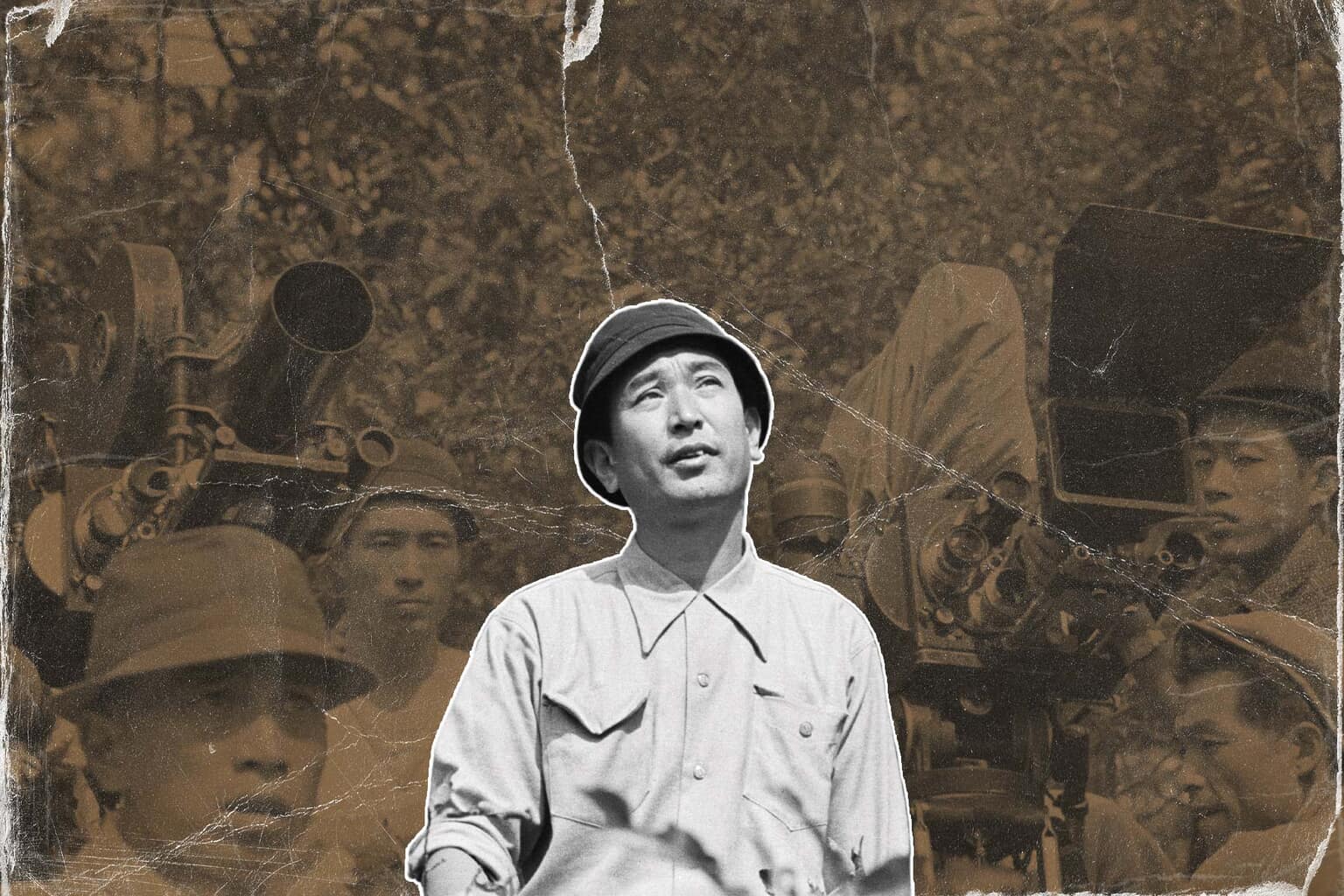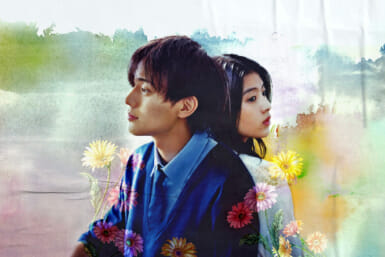On this day in 1947, Senkichi Taniguchi’s film Snow Trail about three robbers escaping into the mountains was released in Japan. It marked the silver screen debut of the man who is widely regarded as the finest actor in Japanese cinematic history: the great Toshiro Mifune. The screenplay for the movie was written by Akira Kurosawa. The esteemed filmmaker would go on to direct 16 movies starring Mifune, including several masterpieces.
“I have never as an actor done anything that I am proud of other than with him,” said Mifune of the legendary director. The admiration was mutual. “Mifune had a kind of talent I had never encountered before in the Japanese film world,” wrote Kurosawa in his memoir, Something Like an Autobiography. While their names are intrinsically linked, for our latest Spotlight article, we’re focusing on just one of them: the man sometimes referred to as the “Japanese John Wayne,” who featured in around 170 feature films.
Background
The most iconic Japanese actor of the 20th century, ironically, didn’t set foot in Japan until he was 21. Mifune was born on April 1, 1920, in the Japanese-occupied city of Shandong (present-day Qingdao). His parents, who were both Methodist missionaries, were encouraged to live there by the Japanese government during the country’s occupation of China. Then, when he was 4, the family moved to the port city of Dalian. Mifune once said that he “never felt the slightest inferiority complex toward foreigners,” due to his cosmopolitan upbringing.
During his teen years, Mifune often helped out at his father’s photography studio. In 1939, the then 19-year-old was drafted into the Japanese Imperial Army. Initially enthusiastic, he was often beaten and soon became disenchanted. “My father always had that forceful voice, and his superiors didn’t like it,” said Mifune’s son Shiro in the documentary Mifune: The Last Samurai. “They thought he was too cocky for a young, inexperienced soldier.”
In 1941, Mifune was transferred from Manchuria to a base in Yokkaichi, Mie Prefecture. During his time there, he worked in the aerial photography unit, using the skills he developed in his father’s studio to develop photos to assist with attacks. Towards the end of the war, he moved to Kumanosho, Kumamoto Prefecture, where he was put in charge of providing kamikaze pilots with their farewell dinners. According to Shiro, he’d become disillusioned with the futility of the conflict and Japan’s fervent nationalism, telling the pilots: “You don’t have to say, ‘Banzai!’ for the emperor. Instead, just say goodbye to your mother. That’s all you need to do.”
An Unexpected Opportunity
When the war ended, Mifune got on a freight train with two army blankets — his only belongings. With his parents presumed dead and no home to speak of, he headed for Japan’s capital, where he would eventually look up an old friend from the military who worked for Toho Studios. He hoped this friend could help him get work as a photographer’s assistant at the company. Instead, he sent off Mifune’s resume and picture for an acting audition as part of the June 1946 New Faces talent search.
Though still more interested in photography, Mifune decided to go for it. Most people in the room reportedly weren’t impressed with what they saw. Famed actress Hideko Takamine, however, was affected by his performance and allegedly told Kurosawa (who was working on an adjoining set) about the audition and he arrived in the afternoon to see “a young man reeling around the room in a violent frenzy.” It left a big impression on him. “I am a person rarely impressed by actors,” he wrote. “But in the case of Mifune I was completely overwhelmed. The ordinary Japanese actor might need 10 feet of film to get across an impression. Toshiro Mifune needed only three feet.”
Mifune also attracted the attention of Kurosawa’s mentor, Kajiro Yamamoto. He cast him as the gang boss in his comedy film These Foolish Times and recommended him to Taniguchi, who persuaded Mifune to appear in Snow Trail by promising to buy him a new set of clothes. An actor suddenly in demand, Mifune was then offered a starring role as a mobster in the existential movie Drunken Angel, which became Kurosawa’s first critical success. He would go on to perform in 15 more films directed by the legendary auteur.

Akira Kurosawa | Anna Petek
The Golden Era
During his illustrious career, Mifune worked alongside some outstanding directors, including Mikio Naruse, Kenji Mizoguchi and Steven Spielberg. It’s his collaborations with Kurosawa, though, for which he will always be remembered. He first achieved global fame for his role as the boastful bandit in Rashomon (1950), a riveting psychological thriller that investigates the nature of truth. He enhanced his international reputation further by playing the loose cannon Kikuchiyo in Seven Samurai (1954), a film that topped a Critics’ Poll on the BBC for the best foreign language film of all time.
To prepare for his parts in Rashomon and Seven Samurai, Mifune reportedly studied footage of lions in the wild. Boasting tremendous power and kinetic energy as an actor, he became the ultimate ‘roving warrior’ in the samurai films he appeared in, particularly Yojimbo (1961). Playing a mythical ronin with no identity, his iconic performance inspired several actors, including Clint Eastwood. Mifune, though, was anything but one-dimensional, as he showed with his heartfelt yet slightly subdued performance as Kingo Gondo, a wealthy executive faced with a moral dilemma in High and Low (1963).
In 1965, Mifune starred as the charitable Doctor Kyojo Niide in Kurosawa’s jidaigeki (period drama) Red Beard. It was the last time the two men ever worked together. As for why the relationship broke down, there has been a lot of speculation over the years. The prolific actor had established his own production company in 1962, something that Kurosawa allegedly advised against because he felt he wouldn’t be able to cast him as freely. Mifune had also been required to keep a beard for two years for Red Beard. This meant he couldn’t take on other roles during that period, leaving him in debt.
Beyond Kurosawa
Despite not being “proud” of any movie he made other than with Kurosawa, Mifune’s body of work is still extremely impressive, even if you take away the great man’s films. His portrayal of Musashi Miyamoto in Hiroshi Inagaki’s The Samurai Trilogy (1954-56) was particularly memorable, as was his performance as the skilled swordsman Isaburo Sasahara in Masaki Kobayashi’s Samurai Rebellion (1967). Other standout titles in his filmography include Mizoguchi’s, The Life of Oharu (1952), Kihachi Okamoto’s The Sword of Doom (1966) and Japan’s Longest Day (1967).
Unsurprisingly, foreign directors were also keen to work with him. In John Boorman’s Hell in the Pacific (1968), Mifune and Academy Award-winner Lee Marvin were the only two actors in the film. Despite not being able to communicate with each other, the intensity of their relationship makes for a gripping watch. Mifune featured in several other international productions, such as the Oscar-nominated Mexican movie Ánimas Trujano (1962) by Ismael Rodriguez and Spielberg’s American war comedy 1941, released in 1979.
Mifune would have been even more well-known to Western audiences had he not, allegedly, turned down roles as the Japanese spy chief Tiger Tanaka in the James Bond film, You Only Live Twice (1967) and as both Obi-Wan Kenobi and Darth Vader in Star Wars (1977). He did earn fame in the States, however, by playing Yoshi Toranaga (a character inspired by Tokugawa Ieyasu) in the NBC ratings hit, Shogun. Based on James Clavell’s novel of the same name, the program won the Golden Globe for Best Television Drama Series, while Mifune garnered an Emmy nomination for Outstanding Lead Actor in a Limited Series.
Toshiro Mifune’s Death and Legacy
The renowned actor continued to work into his 70s. His last film was Kei Kumai’s Deep River, a spiritual and religious journey into the heart of India based on Shusaku Endo’s novel of the same name. That was released in 1995, the same year his estranged wife Sachiko Yoshimine died. Despite a very painful parting of the ways (though they never officially divorced), she returned to look after him in 1993 after his relationship with his mistress, Mika Kitagawa, ended. By that stage, Mifune was suffering from dementia. After Yoshimine’s death, his physical and mental state deteriorated rapidly. On Christmas Eve, 1997, he died of multiple organ failure. He was 77.
Kurosawa passed away less than nine months later. In a short period, Japan had lost its two most iconic cinematic figures. The pair met for the final time at the funeral of Godzilla director Ishiro Honda in 1993. They reportedly gave each other a tearful embrace. In 2016, Mifune received a posthumous star on the Hollywood Walk of Fame for his work in the motion picture industry.
A year earlier, director Steven Okazaki released the documentary, Mifune: The Last Samurai, narrated by Keanu Reeves. It features commentaries from the likes of Martin Scorsese and Spielberg. “A lot of people try to imitate Mifune,” said the latter. “Especially when they’re playing strong, silent, but nobody can. He was unique in all the world.”









